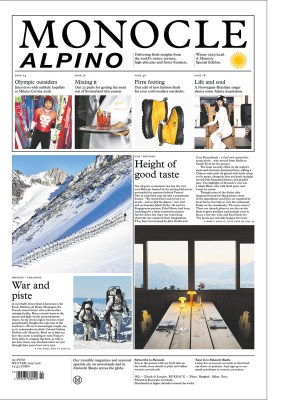Privatisation could be the fix for US air traffic woes and keep the skies open
United Airlines has invited travellers to “fly the friendly skies” since the 1960s but US airspace has been anything but amicable of late. The record-breaking 37-day-and-counting federal government shutdown has had many casualties, with the some 13,000 air-traffic controllers who have gone without pay among the most critical. The nation’s aviation safety specialists are at breaking point: nearly 80 per cent of controllers were absent at facilities in the New York area on Friday and several US airports issued ground stops over the weekend. For frequent flyers, the Misery Map – a live visualisation of flight delays – has become a more compulsive news source than any social-media platform.
In a continent-sized country where flying remains one of the only viable ways to connect far-flung cities, air-travel disruptions might force Democrats and Republicans to make a deal – as they did during the last government shutdown that ended in January 2019. But in the haste to resume normal operations, both parties are missing an opportunity to fundamentally rethink how air-traffic control is run.

This weekend I witnessed how things could be done differently while on a visit to Olympic National Park in Washington. National parks have been severely affected by the shutdown, with more than half of staff furloughed, impacting guided tours, rubbish collections, road maintenance and more. While I didn’t meet any mounted park rangers, I was able to soak in a hot spring and dine fireside in a handsome lodge. The difference? The facilities are privately run and not reliant on federal funding.
With an increasingly erratic federal government, a similar model would make sense in aviation. Some democracies – including Canada, Switzerland and the UK – already use a mix of not-for-profit and state-owned enterprises to operate their air-traffic control systems. Airlines and travellers pay for the service, which is heavily regulated and closely monitored to ensure that profit motives don’t trump the critical life-safety function of air-traffic control. With a steady flow of income, ageing systems can quickly be upgraded and key staff kept on the payroll.
Like too many reasonable ideas these days, however, this one is unlikely to get a hearing on Capitol Hill. The US transport secretary, Sean Duffy, is pursuing a $12.5bn (€10.86bn) plan that involves replacing systems running on old technology such as floppy disks. Unfortunately, he works for an administration that has shown little appetite for big-ticket spending on civilian infrastructure.
It’s a shame because US airports are finally showing glimmers of hope. While they have long lagged behind the service provided by hubs in Singapore, Tokyo or Dubai, that could soon change. New York’s LaGuardia – once derided by Joe Biden as “third-world” – finally saw its overhaul completed last year. Two of the metropolitan area’s other major aviation hubs, JFK and Newark, are also being given a thorough revamp. Portland just won a global design award. New terminals are under way everywhere from Denver and Seattle to Los Angeles and Salt Lake City. With the football World Cup next year and the Olympics in 2028, airport authorities, which are predominantly run by local and state governments, are working hard to make a better first impression on the ground. If only the federal government in charge of the skies could do the same.
Gregory Scruggs is Monocle’s Seattle correspondent. For more opinion, analysis and insight, subscribe to Monocle today. Further reading? Here’s why US national parks are a soft-power icon targeted by the White House. Plus: is the great American roadtrip back and on rails?



